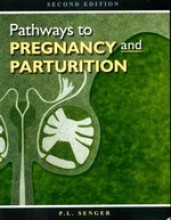China's Environmental Problems - Contemporary Environmental Problems
15 important questions on China's Environmental Problems - Contemporary Environmental Problems
Some eastern and northern cities have sunk due to water loss. What can be the consequences of subsiding?
What has the government done in response to the water shortages?
- They have set up projects to move water north (e.g. via the Grand Canal or from the Three Gorges Dam).
- They have increased charges for organizations using irrigation water and have advocated dry-land farming
- Water quotas have been assigned to industries.
Why is it expected that household water use will become more wasteful in the future?
- Higher grades + faster learning
- Never study anything twice
- 100% sure, 100% understanding
Why has China's water shortage problem become an international issue?
How did China stop the decline of forestry?
How has rapid soil erosion contributed to China's environmental degradation?
What has been the main cause of the severe soil erosion?
Some of the forest areas which had been opened up to farming have been returned to forests and herding. However in many of the eroded areas it is hard to persuade peasants to change to forestry or to enforce policies. Why?
What has the government done to tackle soil erosion?
- A massive area of eroded land has been planted with trees or terraced
- Tens of thousands of check dams have been built across small gullies to control erosion.
- The focus has now shifted from individual plots to entire river basins and from central to local governments.
- Some of the eroded land has been returned to forestry and herding.
On Hainan island and in nearby southern regions, China's paddy lands suffer from gleization. What is it and why does it occur?
What will happen if the glaciers will continue to melt at this rate?
What has caused increased salinization and alkanization?
Pollution of surface water is a serious problem in China. Name a negative consequence of this problem.
- a World Bank report published in 2007 suggested that 60.000 premature deaths were attributable to poor-quality water on a yearly basis.
- It results in more than US$21 billion a year in losses.
Many small rivers in China have become anoxic. What does this mean?
In the period of communization, China was succesful in integrated pest management. What is that and why was it succesful at that time?
The question on the page originate from the summary of the following study material:
- A unique study and practice tool
- Never study anything twice again
- Get the grades you hope for
- 100% sure, 100% understanding































